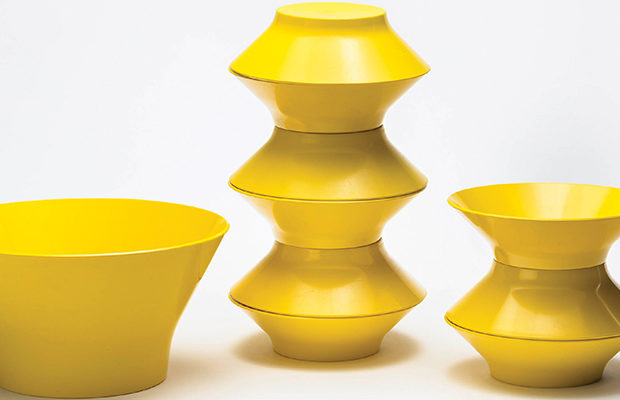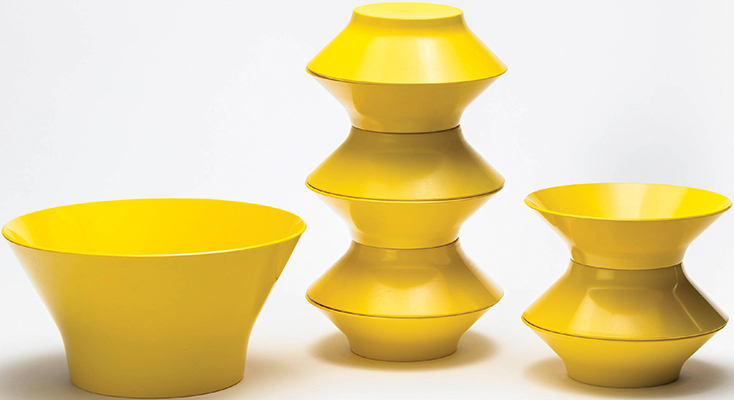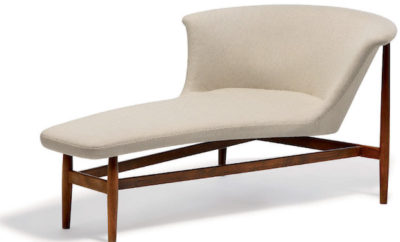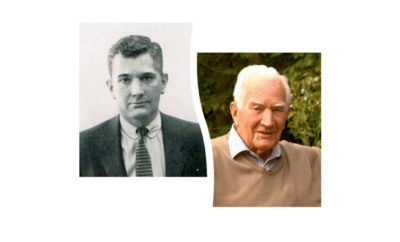
Exhibition
Meet Georg Jensen
THE SPLENDID WORK OF GEORG JENSEN RETURNS TO the Art Institute of Chicago this summer, nearly one hundred years after the Danish company’s first American exhibition was held there in 1921. The booklet accompanying that show, subtitled “An Artist’s Biography,” praised Jensen’s unity of beauty and usefulness in his handcrafted work and spoke of the “joy of beholding a beautiful thing.”

Salad serving set by Henning Koppel for Ørskov & Co.,c. 1965. Images courtesy of The Art Institute of Chicago
First in Denmark and then elsewhere in Europe and America, Jensen’s silverware was particularly admired for what has been called its “moonlight shine,” a satiny texture that resembles milky glass in certain lights. Among the pieces on view, Jensen’s Grape compote, sculptural sauce spoons, and Blossom coffee and tea service with not-quite-open magnolia finials fit the art nouveau aesthetic of the time, which esteemed simple sinuous lines and asymmetrical composition. The more forward-looking, pared-down forms of his designer Johan Rohde coincided with those of the modern buildings that had just begun soaring skyward, demonstrating how form followed function. For example, Rohde’s 1919 sauceboat can be seen as a miniature architectural object, unadorned except for hammer marks left by the silversmith and a scrolled silver handle that is perfectly balanced by what has been referred to as a schilling-shaped ornament. Together, Jensen and Rohde established a new style that favored simplicity and natural forms, often leaving large expanses of silver exposed in order to focus attention on the material itself; the work is always finished inside and out, as well as all the way around.

Pitcher, model 606 by Harald Nielsen, designed in 1930, produced 1930–1932.Promised gift of a private collection
Many of the pieces in the current exhibition, titled Georg Jensen: Scandinavian Design for Living (June 22 to September 9), were pictured in the early booklet, offering insight into an era when daily meals entailed ceremony, even for middle-class households. A “tablescape” would include serving platters, candle holders (in Denmark, candles were used at lunch and dinner), a sugar caster, butter bowls, a chocolate pot, and a toast rack. The show highlights the firm’s long list of accomplishments in silver design well into the twentieth century, including Harald Nielsen’s purely geometric spherical pitcher; Sigvard Bernadotte’s virtuosic cocktail shaker; and Verner Panton’s famous Crash plate, inspired by the indiscriminate patterns of crumpled paper. One of the surprises is the degree to which the Jensen firm experimented with copper and stainless steel—and with plastic and wood. After the political and social upheaval brought about by World War II, daily life changed around the globe, and families required new and less formal objects for modern houses. The long history of Jensen’s organic forms and its reputation for fine craftsmanship put the company in the forefront of the Danish modern movement and allowed a great deal of cross-pollination with other manufacturers. Examples of furniture and home design pieces showing this collaboration are included in the show. It’s delightful to see how Henning Koppel translated the Jensen aesthetic into his bright yellow 1960s plastic salad serving set for Ørskov & Co.—executed with a graceful clarity that was evident from the start. artic.edu












